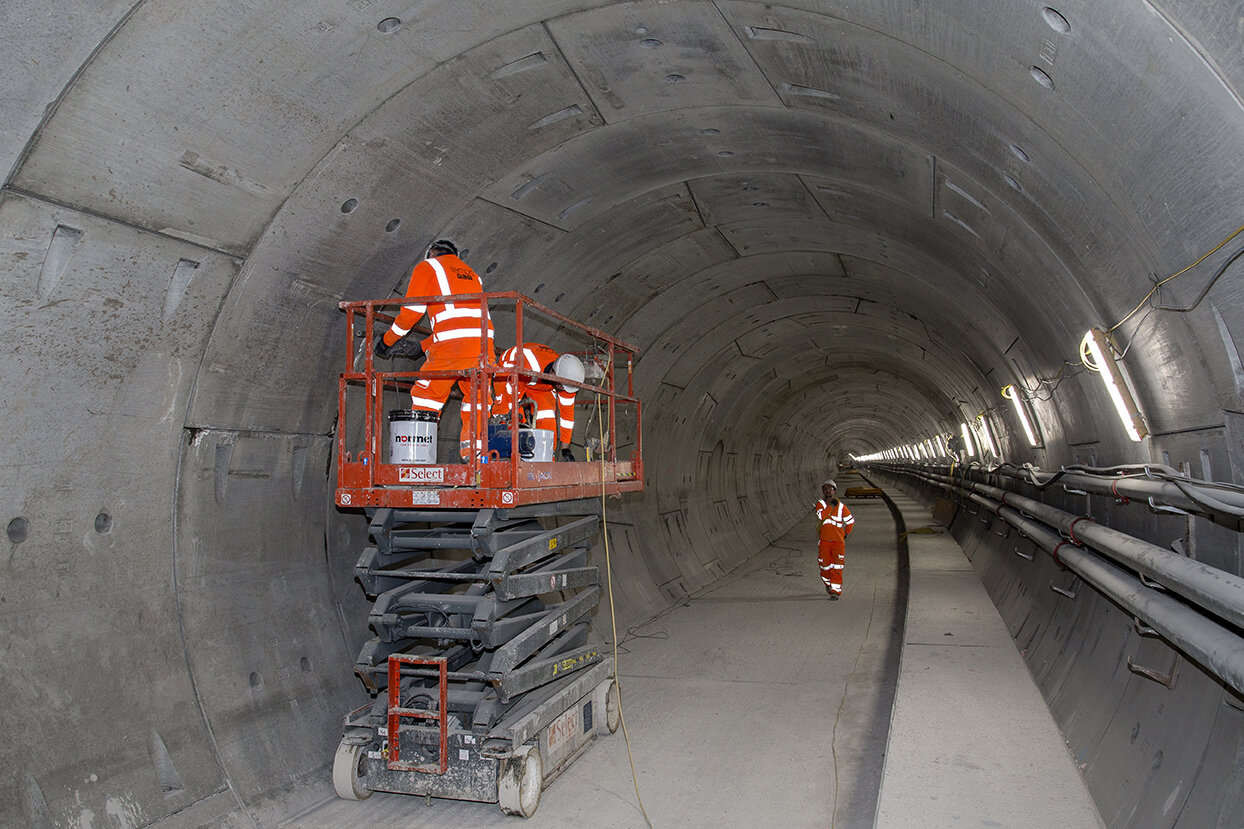CONCRETE WATERPROOFING
Resin injection to waterproof concrete is probably the most widely used application of injection in the industry. Well-established in tunnelling, it has yet to reach its full potential in the repair and maintenance of bridges and substructures, where it can offer an economical solution to stop water ingress where other waterproofing measures have failed or, as seems to happen all too frequently, been damaged by utility works. Waterproofing injection can significantly extend the lifespan of a structure.
Typical Tunnelling Applications:
Segment tunnel crack repairs
Segment tunnel gasket repairs
SCL tunnels crack repairs
Secant pile crack repairs: horizontal/ structural or seams
Re-injectable tube systems for joints
for ground consolidation to shafts and headers please refer to Ground Engineering
PU gasket injection in a segment tunnel
Typical Bridge Applications:
Soffit repairs
Abutment repairs
Retaining wall repairs
Service tray waterproofing
Concrete waterproofing system
Cast-iron waterproofing system
Acrylic waterproofing injection to a bridge soffit
Typical Substructure Applications
Crack bonding
Delamination repair
Retaining walls, upstand/ kickers, diaphragm walls
Failed gasket joints
PU waterproofing injection in a lift shaft
Equipment & Resin Specification
Most resins can be injected using easily portable 110-volt electric pump. The most suitable resin for a concrete waterproofing or strengthening depends mostly on the nature of the leak or repair, its location, the speed of any water ingress, and the requirements for strength and flexibility.
In principle, there are four options: PUs, acrylic resin, epoxy resin, and silicate. PUs are used primarily for gasket and larger crack repairs: they cure quickly to form a semi-rigid to rigid seal. Acrylic resins are more vicious, and used to penetrate fine cracks. Epoxy resins give structural strength and can be used for waterproofing/ structural repairs, e.g. horizontal cracks in secant piles. Epoxy resins can successfully seal wet cracks without flowing water, or strengthen areas of poor quality concrete. Silicates are indicated where concrete shows damp spots without cracking. Please also see our FAQ for more details on the different resins.
Breaking out after PU injection to consolidate a heading
Service Tray Injection
Injection is particularly useful for solutions in hard-to-access or sensitive areas, for example service trays. Here, waterproofing injection avoids disruption of cables and pipes, and can link with existing waterproofing in the road deck. Resin injection allows work from beneath the soffit, with the structure remaining in full use – offering a low impact alternative to conventional methods of repair. In most cases, traffic management is unnecessary.
Acrylic gel to waterproof around services in a bridge deck
Key Benefits of Waterproofing/ Strengthening Injection
Full control of set times
Good chemical resistance against salts
Inhibits rust
Good cost control: can be reactive (spot injection)
All quantities can be measured and recorded
Bridges: Injection can be carried out above or below soffit
Retains appearance of existing structure
Works with water management, e.g. weep holes
Application Conditions & Limitations
PU resin are injected with a catalyst and will set in minutes, depending on the amount of catalyst added or the volume of water present. Set times are affected by temperature, and can be manipulated by length of hose/lances.
Acrylic resins have permanent open times until an accelerator is added, giving maximum flexibility.
Resins are affected by temperature, with cold weather conditions slowing down the reaction time.
Can be potable water safe, WRAS approved
Waterproofing injection in an underpass
Example Concrete Waterproofing Projects
LUL Finsbury Park, Spencer Group
UCLH Proton Beam Therapy, Bouygues
CrossRail (Bond St, TCR & Fisher St, Canning Town, Stepney)
Qatar Rail, Doha: Gold Line, Red Line
Elan Valley Aqueduct, Knighton, Barhale
Demark Road Tunnel, Nomenca
Bishops Avenue, Harrison Varma
Eynsham Rd Bridge, Riney
White Street, Dyer & Butler
Hale Wharf, Agility Alliance
Kingsway Tram Tunnel, Camden









































